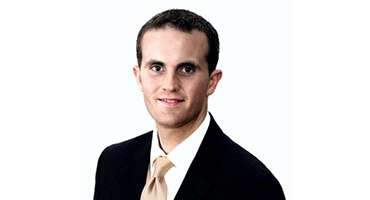Manufacturing environments are fast-paced, complex and demanding. When a system can meet those demands every day, you appreciate that. You leave that system in place.
For decades.

“A lot of manufacturers have grown or changed faster than they could update their systems front, and they’ve had the mentality of ‘if it's not broke, don't fix it.”
But the world around your plant keeps changing, and your company is changing, too. That’s why outdated systems can lead to some serious inefficiencies. “A lot of manufacturers have grown or changed faster than they could update their systems, and they’ve had the mentality of ‘if it's not broke, don't fix it,’” said Grant Thornton Manufacturing Industry Incoming Leader Kelly Schindler.
“We still see clients running AS/400 green screen systems that are older than I am,” said Grant Thornton Technology Modernization Partner Tony Dinola. Those systems might still work, but they’re increasingly inefficient.
Integration

“In manufacturing, it’s very common to see disparate systems that do not talk to each other.”
Many outdated systems are not integrated with the company’s other systems. “In manufacturing, it’s very common to see disparate systems that do not talk to each other,” Dinola said. Often, disconnects appear after mergers or acquisitions. “Maybe a company was attractive; you acquired them, and they had a system that was working for them. Since it was working, you just left it alone,” Schindler said. “I have seen large manufacturers that have grown through acquisitions and now have dozens of subsidiaries with different ERP systems. They don’t even have a common email system.”
Disconnects can seriously limit a company’s manufacturing and engineering systems (MES), product and lifecycle management (PLM), enterprise and resource planning (ERP) solutions, and overall access to data for quick decisions and troubleshooting. As manufacturing competition evolves and more leaders depend on data to drive decisions, companies are being pushed to evolve or risk not surviving.
“It goes back to efficiency,” Dinola said. “Companies are being forced to become more operationally efficient so that they can reduce their cost of delivery and become more competitive, more attractive as an acquisition target or more ready to acquire other companies. There is also a huge employee retention component.”
Insights on efficiency from other key industries
Workforce
Some workers don’t like to learn new tools — but nobody wants to learn old tools.

“If you ask somebody who was born with an iPhone in their hand to go manage a green screen application, it's going to be very hard to keep them engaged at your company.”
“The traditional employee base of a manufacturer has probably been closer to retirement age than they are to graduation age,” Dinola said. That has made manufacturers hesitant to try to introduce new systems. “But that is quickly shifting. The population is evolving to be folks in their 20s and 30s who were born with iPhones in their hands. If you ask somebody who was born with an iPhone in their hand to go manage a green screen application, it's going to be very hard to keep them engaged at your company.”
Manufacturers used to worry that new systems would lead to employee complaints. But old systems can now inhibit employee recruiting and retention. “Think about the inefficiency of having to recruit and train, over and over,” Schindler said.
Many factors are pushing manufacturing systems forward but the cost and time barriers can be challenging. Companies often need an on-ramp to modernization.
Modernization
“I think what companies struggle with is the concept of a monolithic system that does everything, versus more targeted systems that are tailored to the industry,” Dinola said.

“A lot of manufacturers have more than one segment. One system doesn’t always make sense for their entire company.”
One unified ERP system might make the most sense for some manufacturers, but ERP systems each have their own strengths. Large or merged companies might have different ERPs to fit different subsidiaries. “Don’t force an ERP solution into a business that doesn’t fit the solution’s business model,” Dinola said. “A lot of manufacturers have more than one segment of their business,” Schindler said. “One system doesn’t always make sense for their entire company.”
Manufacturers might already have individual systems they’ve updated, or they might want to maintain some specialized solutions outside of an ERP. Some companies want a best-of-breed strategy, where they maintain a range of specialized solutions for individual functions. Plus, it can be easier and less expensive to upgrade individual systems, making that the only option when manufacturers can’t afford a complete ERP upgrade.
But how do you avoid the disconnects and inefficiencies?
“Cloud-based software-as-a-service (SaaS) applications make it much easier to tie systems together, and can lower the cost of support compared to an old legacy on-premise infrastructure type of environment,” Dinola said. “One option is to focus on an interoperability strategy, where you identify the opportunities to create integrations and interoperability platforms between your systems. So, you maintain that disparate architecture, but you create an environment where those disparate systems can talk to each other.” This interoperability strategy can come to life in a composable architecture and be much more cost effective.
Composable architecture
A composable architecture essentially creates a layer for integration and communication across various functional areas and their underlying legacy applications. End users look at a single interface, but it is actually a group of underlying applications connected together.
A cloud-based business planning platform (like Anaplan) can help manufacturers unify disparate systems and data into one interface for users and decision-makers. “The idea is that your data can be coming from older systems that users no longer see. They’re looking at a more modern application sitting on top of that,” Dinola said. This approach can modernize the overall technology stack without requiring a complete overhaul of the existing technology. This can create overall organizational efficiencies by reducing the distractions of a wider transformational effort, keeping the business focused on generating revenue.
As you plan future revenue, a composable architecture can unify data for greater efficiency and better decisions. “You have a data-gathering layer that sits on top, which can get the information as or when you need it,” Schindler said.
“For example, plant A runs SAP and plant B runs Oracle. I need to be able to see raw materials in both plants to optimize my supply chain,” Dinola said. “I can't see Oracle and SAP in one unified system, but I can create data architecture to see raw material balances in those two systems through a reporting layer or through integration of the two applications.”
Unique balance
To build a composable architecture, you need to focus on the best integration for your unique balance of benefits. You need to understand the tradeoffs for maintaining multiple systems, including the challenge of ensuring quality through governance and controls.
“For every one of those systems, you need to have an IT team testing them individually, especially in a public company environment,” Schindler said. “Your auditors, internal and external, will need to do walkthroughs with your teams, identify the reports and test those reports. From an audit perspective, it’s less costly to have fewer systems rather than more.” On the other hand, one failed control in one system, does not affect your entire enterprise. “I had one client say their disconnected systems were a challenge from a data analysis perspective, but one control issue or cyber breach wouldn’t necessarily bring down the whole ship." The balance of unification and diversification will be different for every manufacturer, and for every composable architecture.
How do you find the unique balance for your company?
“I always ask the CFO, ‘How are you getting the data you need, when you need it?’” Schindler said. Often, leaders will say that they really aren’t — their data is stale by the time they see it, because they need to wait for teams to close the books and then put the data into another system. “Then, you're looking at data and asking questions three to four weeks after the data was collected — that’s well into the next period,” Schindler said.
Manufacturers must ensure the stability of their operations every day, but they also need to look beyond today. The fact that systems and decision models worked in the past is no longer proof that they will work in the future, so it’s time to design an architecture that balances your unique factors for your future success.
Contacts:



Kelly Schindler
Head of Manufacturing Industry
Grant Thornton Advisors LLC
Partner, Audit Services, Grant Thornton LLP
Kelly Schindler is the Head of the Manufacturing industry and an Audit Partner based in the Saint Louis office.
Saint Louis, Missouri
Industries
- Manufacturing, Transportation and Distribution
- Retail and Consumer Brands
- Technology, Media and Telecommunications
- Transportation and Distribution
Service Experience
- Audit & Assurance
Efficiency in other industries
Trending topics

No Results Found. Please search again using different keywords and/or filters.



Share with your network
Share